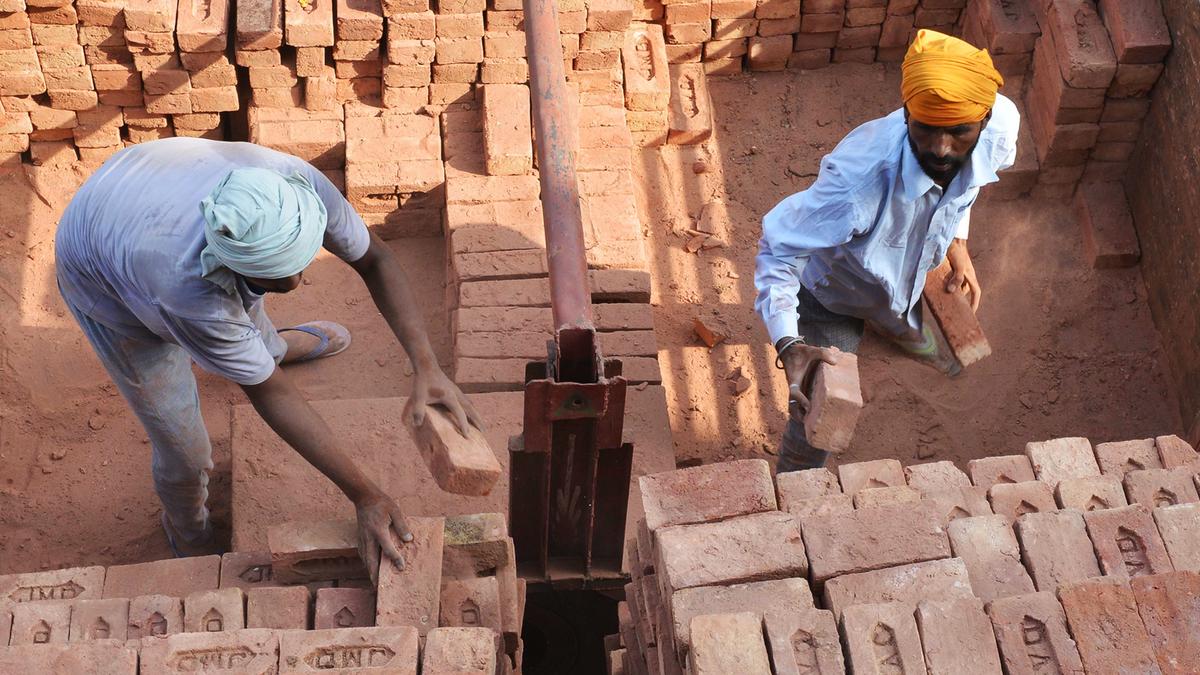Bonded Labour in India

- 03 May 2025
Context:
Despite constitutional safeguards and decades-old abolition laws, bonded labour continues to haunt India’s informal economy. Marked by coercion, caste oppression, and systemic apathy, this form of modern slavery traps millions in exploitative work conditions under the guise of debt repayment or social obligation.
Ground Reality and Human Cost
The harrowing experiences of survivors like Mukesh Adivasi from Madhya Pradesh and K. Thenmozhi from Andhra Pradesh underscore the brutality of bonded labour. Lured by paltry advances (?500–?2,000), these individuals were trafficked across states, subjected to 14–16 hours of daily toil, and endured beatings, confinement, and psychological trauma. Their stories reflect the plight of an estimated 1.84 crore bonded labourers, as acknowledged by the Ministry of Labour and Employment (MoLE) in 2016.
However, between 2016 and 2021, only 12,760 individuals were officially rescued and rehabilitated — less than 1% of the total. Achieving the 2030 rehabilitation target would require rescuing over 11 lakh individuals annually, a goal far from the current trajectory.
Structural and Social Triggers
Bonded labour is not merely an economic issue but a complex interplay of poverty, caste discrimination, and weak governance. Immediate triggers include emergencies like illness, job loss, or dowries, pushing families to seek advances from exploitative employers. However, deeper systemic factors — such as caste-based exclusion (over 80% of bonded labourers belong to SC/ST/OBCs), illiteracy, and employer monopolies in rural credit and labour markets — perpetuate this cycle.
The Global Slavery Index lists India among the countries with the highest prevalence of modern slavery. Studies from states like Punjab reveal that 84% of bonded workers belong to backward castes, reinforcing the role of social stratification in this injustice.
Policy Gaps and Legal Shortcomings
Though bonded labour was abolished under the Bonded Labour System (Abolition) Act, 1976, enforcement remains weak. Many states deny its existence or fail to report cases, delaying rehabilitation. The Trafficking of Persons Bill, 2018, criticised for excluding bonded labour, further highlights legislative gaps.
Labour law reforms have exacerbated vulnerabilities. The Labour Codes (2019–2020) undermined unionisation and collective bargaining — vital tools once advocated by B.R. Ambedkar for worker empowerment.
Additionally, 90% of India’s workforce is in the informal sector (NSSO, 2023), lacking formal contracts, social security, or grievance redressal. This unregulated landscape fosters exploitation, especially among migrants fleeing climate distress and rural unemployment.
Way Forward
- Enforcement Reforms: Empower District Vigilance Committees with legal powers; digitise complaint tracking and link it with Aadhaar-based databases.
- Legal Overhaul: Amend labour codes to restore union rights and introduce caste-sensitive protections.
- Social Empowerment: Launch targeted rehabilitation schemes for SC/ST communities, offer skill training and land rights, and use vernacular media for rights education.
- Transparency and Data: Establish a national registry of rescued bonded labourers to monitor their reintegration and prevent re-trafficking.
Conclusion
Bonded labour in India represents a fundamental failure of justice, governance, and social equity. Real transformation requires a multi-pronged approach — strengthening laws, empowering vulnerable communities, and confronting the caste-class nexus of exploitation. Until then, India’s economic growth will remain morally compromised by the invisible chains of forced labour.
